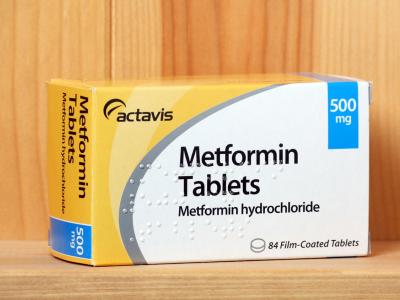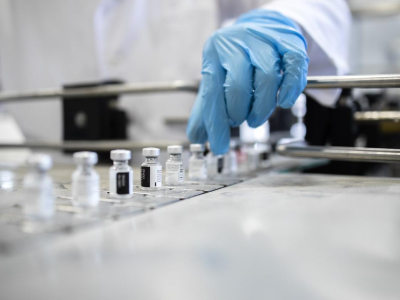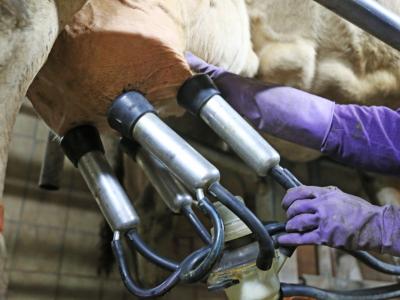Our weekly wrap-up of antimicrobial stewardship & antimicrobial resistance scans
High empiric antibiotic use noted for gram-negative infections in US
A study of adults discharged from more than 900 US hospitals in 2019 found that more than one-third received empiric gram-negative antibiotic therapy, with more than 1 in 5 receiving broad-spectrum antibiotics, researchers reported yesterday in Clinical Infectious Diseases.
Researchers from the University of Maryland Medical School, Johns Hopkins University, and Merck examined 2019 data from the Premier Healthcare Database on adults discharged from US hospitals, focusing on admissions that received at least one empiric gram-negative antibiotic. Empiric was defined as receipt within the first 2 days of hospital admission. They used multivariable logistic regression models to evaluate associations between patient and hospital characteristics and empiric receipt of broad-spectrum gram-negative antibiotics.
Among more than 8 million admissions across 928 hospitals in 2019, 37% of patients received gram-negative antibiotics within the first 2 days of hospitalization, and 22% received broad-spectrum gram-negative antibiotics. Among patients who received broad-spectrum therapy, 30% did not have a common infectious syndrome present on admission (pneumonia, urinary tract infection, sepsis, or bacteremia) or surgery or an intensive care unit stay during the empiric window—a finding that suggests those patients may have been exposed to broad-spectrum antibiotics unnecessarily.
The study also found gender, racial, and regional disparities. Holding other factors constant, men were 22% more likely to receive broad-spectrum therapy (adjusted odds ratio [aOR], 1.22; 95% confidence interval [CI], 1.22 to 1.23), while non-White racial groups were 6% to 13% less likely (aOR range, 0.87 to 0.94). The highest adjusted odds of receiving broad-spectrum therapy were in the West South Central US census division (Arkansas, Louisiana, Oklahoma, and Texas).
Even after adjusting for patient and hospital characteristics, there remained substantial variability among hospitals, with the probability of receiving broad-spectrum therapy differing by as much as 34 percentage points due solely to the admitting hospital (95% interval of probabilities, 43% to 77%).
"Taken together, our findings underscore the need for greater standardization of empiric antibiotic prescribing in U.S. inpatients, which may require multi-stakeholder initiatives between medical and surgical organizations and infectious disease societies," the study authors wrote.
Jun 23 Clin Infect Dis abstract
Study finds high consumption of broad-spectrum antibiotics in India
A study of antibiotic use in India found that per capita consumption of antibiotics is low relative to other countries, but use of broad-spectrum antibiotics that should be used sparingly is high, researchers reported this week in The Lancet Regional Health Southeast Asia.
Using cross-sectional data from a nationally representative private-sector drug sales database, a team of US and Indian researchers examined antibiotic consumption in the private sector in India in 2019. Private sector antibiotic consumption accounts for roughly 80% to 90% of antibiotic consumption in India, and private companies are the only entities in India that track antibiotic sales and consumption.
For their analysis, the researchers tracked consumption overall and across four dimensions: World Health Organization (WHO) AWaRe (Access, Watch, and Reserve) classification, essentiality, product type, and approval status.
The total number of defined daily doses (DDDs) of antibiotics consumed in 2019 was 5,071 million, translating to 10.4 DDD per 1,000 population per day (DID)—a number lower than previously estimated consumption rates in Brazil (22.75 DID), Pakistan (19.6 DID), Sri Lanka (16.3 DID), and Russia (14.82 DID). Access antibiotics accounted for 27% of the total DDDs consumed, while Watch group antibiotics accounted for 54.9% and Reserve antibiotics for 1%. Azithromycin was the most-consumed Watch antibiotic (22.4%).
Formulations listed in the National List of Essential Medicines accounted for 49% of consumption, fixed-dose combination (FDC) antibiotics accounted for 34%, and unapproved formulations contributed for 47.1%. Watch antibiotics constituted 72.7% of unapproved products, while combination antibiotics that are discouraged by the WHO accounted for 48.7% of FDCs.
The study authors note that the global goal is to have at least a 60% share for Access antibiotics.
"We found that even with a relatively low overall rate of consumption indicating access issues, a high proportion of broad-spectrum antibiotic use in India is a public health concern," they wrote. "With antibiotic resistance emerging as a global public health problem, it is crucial to institute new regulations and strengthen existing ones to monitor and regulate the sale and use of antibiotics while improving access to appropriate antibiotics through the public health system."
Jun 22 Lancet Reg Health Southeast Asia study
VA study finds expectation of antibiotics colors patient satisfaction
Originally published by CIDRAP News Jun 23
A study of Veterans Affairs (VA) patients found that the expectation of an antibiotic had a bigger impact on patient satisfaction than did receipt of an antibiotic, researchers reported today in Antimicrobial Stewardship & Healthcare Epidemiology.
For the cross-sectional study, researchers from the Veterans Health Administration and Vanderbilt University Medical Center evaluated electronic medical record data and patient satisfaction questionnaires completed by veterans who were treated for an upper respiratory infection (URI) in an 18-clinic ambulatory VA primary care system.
Previous research has shown that unnecessary antibiotic prescribing for URIs is common in VA patients, and one partial explanation is that many VA healthcare providers perceive that their patients expect antibiotics and will base their satisfaction with the visit on whether or not they get them. But that hypothesis has not previously been tested.
Of the 1,329 veterans eligible for the study, 432 completed the questionnaires, for a response rate of 33%. Of those patients, 228 (52.8%) received an antibiotic and 204 (47.2%) did not. Analysis of the questionnaires found no difference in mean total satisfaction for those who received an antibiotic (67.7 points) versus those who did not (66.9 points) (adjusted difference, 0.6 points; 95% confidence interval [CI], –2.1 to 3.3). But for those who expected an antibiotic compared with those who did not, the mean total satisfaction score was 4.4 points lower (95% CI, –7.3 to –1.6 points). And among the veterans who accurately remembered the visit and did not receive an antibiotic, those who expected an antibiotic had significantly lower satisfaction scores than those who did not (unadjusted score difference, –16.6; 95% CI, –24.6 to –8.6).
"In conclusion, antibiotic receipt alone does not determine Veteran satisfaction with URI visits," the study authors write. "Patient expectations of receiving or not receiving an antibiotic were an important factor that significantly affected satisfaction scores."
The authors add that while the findings may not be generalizable to populations outside the VA system, they suggest that working with patients to understand what drives their expectations could inform efforts to reduce unnecessary antibiotic prescribing for URIs.
Jun 23 Antimicrob Steward Healthc Epidemiol study
Study suggests MRSA nasal swabs could play bigger stewardship role
Originally published by CIDRAP News Jun 23
A study conducted in a West Virginia hospital found that implementation of methicillin-resistant Staphylococcus aureus (MRSA) nasal swabs was associated with reduced use of gram-negative antibiotics, researchers reported today in the Journal of Antimicrobial Chemotherapy.
In the study, researchers with West Virginia University Hospitals conducted a retrospective chart review to compare the duration of gram-negative antibiotic therapy for pneumonia before and after the implementation of MRSA polymerase chain reaction (PCR) nasal swabs, which have previously been shown to be very accurate in ruling out MRSA pneumonia and limiting the use and duration of broad-spectrum anti-MRSA antibiotics. Although MRSA is a gram-positive bacterium, the researchers wanted to see if use of MRSA PCR nasal swabs might also have an impact on broad-spectrum gram-negative antibiotics by prompting discussions about appropriate empiric therapy and antibiotic de-escalation.
Comparing antibiotic use in 120 community- and hospital-acquired pneumonia patients pre-implementation and 120 post-implementation, the researchers found that the median duration of gram-negative therapy was 154 hours in post-implementation group and 176.4 hours in the pre-implementation group. There were no significant differences in the secondary outcomes of time to de-escalation (52.7 hours vs 54.9 hours) or time to transition from intravenous to enteral therapy (53 hours vs 57.3 hours). The median cost of gram-negative regimens per patient was nearly $15 lower in the post-implementation group ($31.36 vs $45.90).
The authors say the findings are noteworthy because shorter antibiotic durations not only reduce patient exposure to antibiotics and their potential side effects but can also shorten hospital stays.
"This introduces an additional benefit of MRSA nasal swabs and further incentivizes their use as an antimicrobial stewardship tool," they write.
Jun 23 J Antimicrob Chemother abstract
WHO issues another dire antibiotic pipeline report
Originally published by CIDRAP News Jun 22
The WHO today released another disappointing report on the state of the antibiotic development pipeline.
Issued annually since 2017 as part of the WHO's efforts to prioritize and coordinate the global research and development of new antibiotics, the report presents an analysis of antibacterial agents in the clinical and preclinical pipeline. Previous reports have characterized the antibiotic development pipeline as insufficient for tackling the emergence and spread of antimicrobial resistance (AMR), suggesting that most of the antibiotics in development offer little benefit over existing treatments and that too few are novel drugs that target the multidrug-resistant bacterial species the WHO has deemed "critical" and "priority" pathogens.
In the new analysis, the WHO says the pipeline remains stagnant, with only 27 new antibiotics against priority pathogens in development—down from 31 in 2017—and the number of products in the preclinical pipeline constant over the past 3 years. Of the 27 products targeting priority pathogens, only 6 fulfill at least one of the agency's criteria for innovation, and only 2 are active against "critical" pathogens.
Only 12 new antibiotics have been approved by the US Food and Drug Administration or European Medicines Agency since 2017, and 10 of those belong to existing antibiotic classes where resistance mechanisms are established.
The report also notes that, of the 77 antibacterial agents in development, 45 are "traditional" direct-acting small molecules and 32 are "non-traditional" agents, including monoclonal antibodies, bacteriophages, and microbiome-modulating agents. The WHO says these products could provide a new approach to tackling drug-resistant infections, either as adjuncts or antibiotic alternatives, but many are in the early clinical stages and will face major developmental hurdles.
"There is a major gap in the discovery of antibacterial treatments, and more so in the discovery of innovative treatments," Hanan Balkhy, MD, WHO assistant director-general on AMR, said in a press release. "This presents a serious challenge to overcoming the escalating pandemic of antimicrobial resistance and leaves every one of us increasingly vulnerable to bacterial infections, including the simplest infections."
The WHO says "urgent and concerted" investments in research and development by governments and the private sector are needed to accelerate and expand the pipeline.
Jun 22 WHO press release
Jun 22 WHO 2021 antibiotic pipeline report
New online platform for sharing AMR data launched
Originally published by CIDRAP News Jun 22
Nonprofit health organization Vivli yesterday announced the launch of a new online platform where pharmaceutical and biotech companies can share antibiotic susceptibility data on infection-causing bacterial pathogens.
The Antimicrobial Resistance (AMR) Register will enable companies to securely share AMR surveillance data they collect with researchers, national governments, and multilateral organizations such as the WHO, Centers for Disease Control and Prevention, and the United Nations. Vivli says the aim of the AMR Register is to make the large volumes of raw susceptibility data collected by pharmaceutical and biotech companies all accessible in one place for researchers, who can use it to map patterns of resistance, identify new drug-resistant pathogens, shape policies aimed at halting the spread of AMR, and spur innovation around new antimicrobials.
"Our understanding of how to control antimicrobial resistant infections and how best to protect human health hinges on better access to surveillance data," Marc Mendelson, PhD, chair of the AMR Register scientific advisory board, said in a press release. "Biopharmaceutical company data is a vital missing link in AMR surveillance, making the research enabled by the AMR register critical to mitigating the AMR pandemic and protecting the effectiveness of antibiotics, now and in the future."
Sharing surveillance data, and making it accessible to researchers and public health organizations, was one of the commitments made in 2016 by the more than 100 biopharmaceutical companies and trade organizations that signed on to the Davos Declaration on Antibiotic Resistance and later released the Industry Roadmap for Progress on Combating Antimicrobial Resistance.
Pfizer, GSK, Shionogi, Johnson & Johnson, Merck, Paratek Pharmaceuticals, and Venatorx Pharmaceuticals are among the companies that have already committed to contributing their data to the AMR Register, which was developed by Vivli with a grant awarded by Wellcome.
Jun 21 AMR Register press release
New project to explore link between gender, antimicrobial resistance
Originally published by CIDRAP News Jun 21
Researchers in Africa and Asia have been selected to lead an upcoming research project that will explore the interconnections between antimicrobial resistance and gender.
The International Centre for Antimicrobial Resistance Solutions (ICARS) and the International Development Research Centre announced yesterday that the project will be led by South Africa's Human Sciences Research Council (HSRC), Jive Media Africa, and the Mahidol Oxford Tropical Medicine Research Unit (MORU) at Mahidol University in Thailand. The team will conduct systematic reviews, workshops, and interviews with key experts to develop guidance for AMR research teams that are integrating gender into their work.
The ultimate aim of the guidance is to help strengthen the gender inclusiveness of AMR intervention and implementation research projects in low- and middle-income countries, particularly in sub-Saharan Africa and South Asia.
"We anticipate that this project will provide researchers with the necessary tools to capitalise on the potential of a gender lens to improve the quality, contextual relevance and impact of their AMR research," lead Investigators Ingrid Lynch of HSRC and Poy Naemiratch of MORU said in an ICARS news release.
The project is underway and will end in April 2023.
Jun 20 ICARS press release
Study finds frequent treatment failure for complicated urinary tract infections
Originally published by CIDRAP News Jun 21
An analysis of US health insurance data found frequent treatment failure in patients with complicated urinary tract infections (cUTIs), researchers reported yesterday in Open Forum Infectious Diseases.
Using data from two IBM MarketScan databases on privately insured and Medicare patients covering 2017 through 2019, researchers conducted a retrospective cohort study that looked at antibiotic treatment patterns, outcomes, and costs associated with cUTIs among adult patients, stratified by age (younger than 65 and 65 and over), over a 12-month follow-up period. Data from a recent US national database study indicates there are more than 2.8 million cUTI cases a year, but resistance to commonly used oral antibiotics is on the rise, and data on recurrent cUTIs is limited.
Among the 95,322 patients who met the study criteria, the initial setting of care was outpatient (OP) for 84%, and 87% were under 65 years of age. Treatment failure, which was defined as receipt of a new unique OP antibiotic or a cUTI-related emergency department visit or hospital admission, occurred in 23% of OPs under 65 and 34% of those over 65, and over 38% of inpatients (IPs), irrespective of age.
Across both insurance cohorts and age strata, more than 78% received two or more unique OP antibiotics, more than 34% received four or more unique OP antibiotics, more than 16% received repeat OP antibiotics, and more than 23% received one or more intravenous (IV) OP antibiotics. The mean 12-month cUTI-related total healthcare costs were $4,697 for OPs 65 years and older, $15,401 for IPs under age 65, and $17,431 for IPs 65 and older.
"In conclusion, the findings from this study indicate that many cUTIs do not resolve with the initial course of treatment and that a fair proportion of patients have recurrent infections," the study authors wrote. "The results also indicate that many patients receive prolonged durations of OP antibiotics despite data suggesting that shorter courses are as effective as longer durations of treatment."
They added that the findings highlight the need for new oral cUTI antibiotics and treatment approaches.
Jun 20 Open Forum Infect Dis abstract
Cascade reporting linked to drop in fluoroquinolone prescribing
Originally published by CIDRAP News Jun 20
A study conducted in a network of urgent care and express care clinics in Iowa found that implementation of cascade reporting was associated with a significant decline in fluoroquinolone prescribing, researchers reported today in Antimicrobial Stewardship & Healthcare Epidemiology.
The analysis by researchers with UnityPoint Health and the University of Iowa-Des Moines looked at antibiotic prescriptions per 1,000 patient encounters (PE) at seven urgent care and two express care clinics in the period before (June 2018 through June 2019) and after (August 2019 through December 2020) implementation of cascade susceptibility reporting, which is a type of selective reporting in which antimicrobial susceptibility results of secondary antibiotics are reported only if an organism is resistant to primary antibiotics.
At the clinics, susceptibility results for Enterobacterales isolates in urine cultures were reported for fluoroquinolones only if the isolates were resistant to trimethoprim-sulfamethoxazole, nitrofurantoin, and cefazolin.
In the 12 months prior to the intervention, the median fluoroquinolone prescribing rate was 24.6 prescriptions per 1,000 PE, compared with a median of 8.23/1,000 PE in the post-intervention period. Estimates from an interrupted time series analysis showed a 38% reduction following implementation of the intervention, and no change in slope was detected. Of the three primary antibiotics, only nitrofurantoin saw an increase in median prescribing rates post-intervention.
The study authors say the findings are noteworthy because, while antibiotic prescribing varies widely in the urgent care setting, urgent care clinics have seldom been the target of antimicrobial stewardship interventions.
"In conclusion, cascade reporting of antimicrobial susceptibility of Enterobacterales in urine cultures is a feasible and sustainable antimicrobial stewardship that can be applied in urgent care and express care clinics in an integrated health system," they wrote.
Jun 20 Antimicrob Steward Healthc Epidemiol study
Study: Sporicidal disinfectant, thorough cleaning cuts hospital-onset C diff
Originally published by CIDRAP News Jun 20
A sporicidal cleaning intervention implemented at eight acute care hospitals resulted in more thorough cleaning of hospital rooms and was associated with a reduction in hospital-onset Clostridioides difficile (HO-CDI) infections, researcher reported today in Infection Control & Hospital Epidemiology.
In the quasi-experimental study, researchers compared the eight hospitals that implemented the hospital-wide sporicidal cleaning intervention with nine control hospitals from the same healthcare system that didn't implement the cleaning program. The intervention began with environmental services technicians and managers from the hospitals participating in education and training sessions, then adding daily hospital-wide, patient-zone, surface-disinfection cleaning with a sporicidal disinfectant cleaner to their traditional disinfection regimen for rooms occupied by CDI patients.
A structured performance monitoring and feedback program using the fluorescent marker system was added to measure thoroughness of disinfection cleaning (TDC)—a measurement of the percentage of patient zone surfaces that have been disinfected—and optimize cleaning practice. The researchers then compared pre- and post-intervention monthly HO-CDI rates at the intervention and control hospitals.
Following a 3-month wash-in period to evaluate the 18-month pre-intervention cleaning performance, the TDC improved steadily from 59% to 86% at all eight sites post-intervention, and by 18 months was 93.6% for the group. The mean standardized infection ratio (SIR) of HO-CDI decreased from 1.03 in the pre-intervention period to 0.6 (95% CI, 0.13 to 0.75) post-intervention. In the adjusted difference-in-differences analysis in comparison to control hospitals, there was a 0.55 reduction (95% CI, −0.77 to −0.32) in HO-CDI, or a 50% relative decrease from baseline.
"This study provides support for the clinical benefit of an integrated 4-component intervention, not bundled with other transmission mitigating activities, focusing solely on environmental hygiene practice that includes daily, hospital-wide sporicidal disinfectant cleaning with objectively optimized thoroughness of cleaning to reduce endemic HO-CDI," the study authors wrote.
Jun 20 Infect Control Hosp Epidemiol abstract
















